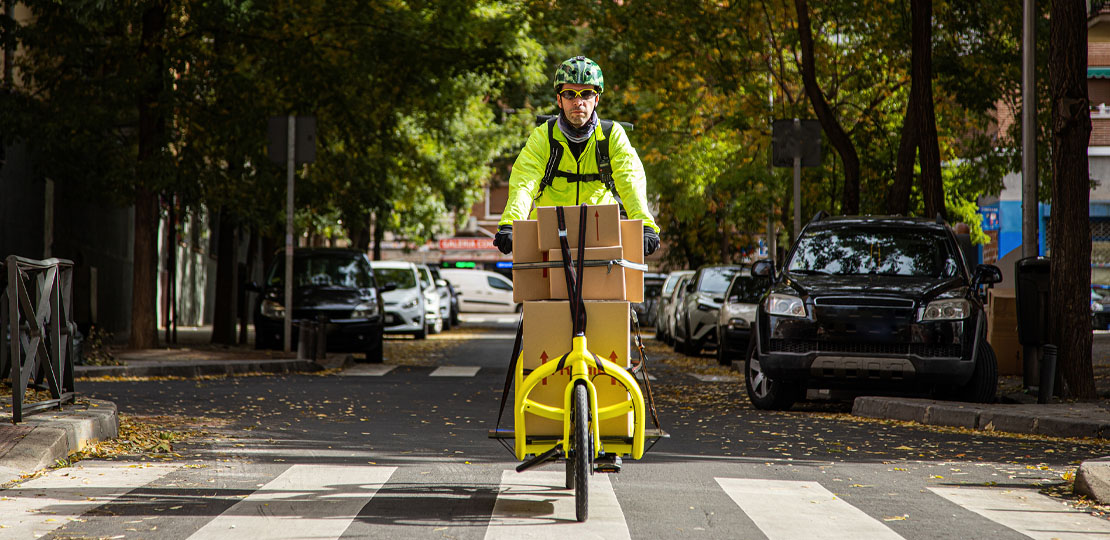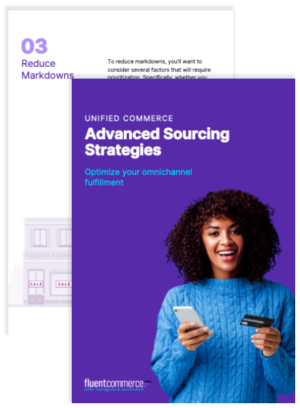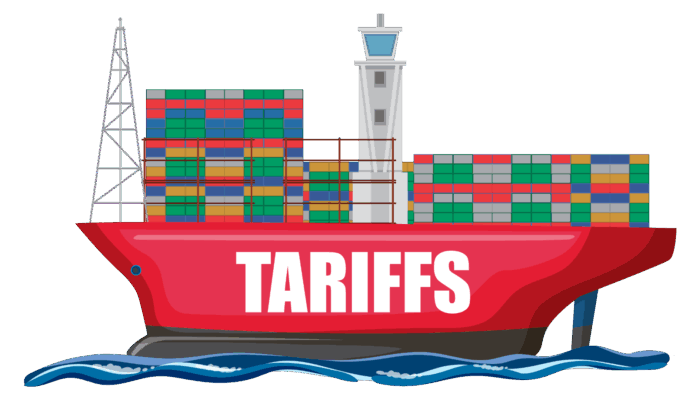Customers are fickle. One of the big dilemmas facing today’s retailers is how to satisfy consumers’ shifting (but often contradictory) preferences. Speedy product delivery provides a case in point.
Driven by the likes of Amazon, consumers have come to expect faster and faster fulfillment. Often within hours of placing an order. But most don’t think about the impact on the environment. This flies in the face of conventional wisdom—that a brand’s sustainability practices are important to consumers. If shoppers stopped to think about all the single-use packaging and fossil fuel burned to get them a product within hours of ordering, they may make different choices. Especially if they understood the personal impact.
According to an Accenture report on last mile delivery, “At current eCommerce growth rates, the number of delivery vehicles on roads in the 100 largest cities will increase by 36%. This not only poses a threat to the sustainability of eCommerce growth for retailers but also creates significant congestion and environmental concerns.” How much congestion?
A recent report from the World Economic Forum revealed that cities have already experienced a 20-35% congestion increase since 2010. What’s more, it stated that by 2030, in the top 100 global cities congestion will rise by over 21%, equaling an additional 11 minutes of commute time for each passenger every day. And nobody wants to sit in more traffic. Which means now, more than ever, it’s imperative for retailers to make last-mile delivery more sustainable. Let’s look at five tactics that could reduce your brand’s impact on the environment:
Reward customers if they choose the green option
Some retailers have taken notice and responded. Timberland, owned by VF Corporation, offers to plant a tree when customers opt to have their orders delivered in 4-8 days rather than the standard 3-day turnaround. So far, Timberland has planted over 55,000 trees. Even Amazon has offered incentives to slow down deliveries.
They offer credits for other purchases if customers choose no-rush shipping. This extra time lets retailers reduce their carbon footprint through load consolidation, or the use of ground transportation rather than air. It also lets them maximize use of existing delivery routes. Let’s look at how.
Optimize delivery routes
A first step is simply to take advantage of more sustainable options offered by your carriers. One option is lower rates if they can consolidate deliveries to a particular area or postal code. But slower delivery can aid your internal fulfillment process too.
For example, you could use existing store replenishment routes for Ship to Store and in-store pickup orders that involve inter-store transfers. That way you can avoid carrier costs. And you may want to consider leveraging trunk routes for home delivery orders too. Why?
Because if you can move a parcel closer to the customer, you’ll pay less in third party carrier charges. This is especially true for larger or heavier items. You’ll want to consider some of the new sustainable options for last mile delivery too.
Use sustainable transportation methods
Trucks aren’t the only means of delivery. Global carrier DHL is leveraging waterways, trams and even bicycles. In India, where deliverymen known as “Dabbawalas” make as many as 450,000 deliveries a day, DHL has pioneered the Cubicycle, a four-wheeled cargo bicycle that operates on a pedal system and can carry a load of up to 125kg. Powered entirely by solar panels, the Cubicycle is equipped with big data transmitters to provide both customers and drivers with real-time data on their deliveries.
And then there are the legendary delivery drones which Amazon claims to be developing. Now Google is getting into the delivery drone game. Wing, an Alphabet subsidiary, has developed an autonomous delivery drone service that aims to increase access to goods, reduce traffic congestion in cities, and help ease the CO2 emissions attributable to the transportation of goods. Though not yet operational, Wing has conducted tens of thousands of test flights both in the United States and in Australia over the past six years. The future of sustainable last-mile delivery will be exciting. But given that drone delivery is still a ways off for most retailers, what can you do in the meantime?
Promote Buy Online Pickup In-Store (BOPIS) or Click and Collect
Is in-store pickup the first delivery option you offer? Or does home delivery come first? Typically, both in the cart and on the Product Details Page (PDP), ‘Ship to Home’ is the first option. But does it have to be that way?
What if the in-store pickup option was above home delivery? Would it provide a little psychological nudge to consider in-store pickup first? If so, it can boost revenue, especially during the holiday season. In fact 82% of holiday click and collect shoppers will make additional purchases when they pick up their order. But what has this got to do with sustainable delivery?
It decreases traffic. Firstly because commuters that use public transport may grab their order on the way to or from work. Secondly, cars don’t cause nearly as much congestion as double parked delivery trucks, especially in urban areas. And often customers will swing by your store as part of a series of errands. So it’s not a dedicated trip. Which means the overall environmental impact is much lower. What’s more, it’s more cost effective for you.
According to a 2020 Accenture report, “Target’s CEO estimates that when his stores fulfill an online order from the back of its store versus a fulfillment center, it reduces costs by 40%.” But what if you don’t have as many stores as the big retailers?
Deliver to lockers
In the United States, Amazon has placed lockers in Rite Aid pharmacy stores. The United Kingdom-based Asda uses parcel towers for both collections and returns (they’re pretty cool). In Germany, DHL has built a network of 3,500 Packstations across the nation so a delivery locker is never further than 10 minutes away. And there are many other third-party locker solutions available. All this results in a win-win for both retailers and customers. Why?
Retailers get the advantage of consolidated delivery which reduces costs. And because many lockers are accessible 24 hours a day, customers can pick up their orders at a time most convenient to them. No long waits at the post office or concerns about porch pirates. In short, lockers can provide a big boost to your customer experience. But if you want to take advantage of sustainable last-mile delivery, two things are essential.
Inventory visibility and flexible fulfillment are key
The first is inventory visibility. How can you know you’re using the best route when you don’t know exactly what you have in stock? And how can you promote in-store pickup if you don’t have a near real-time view of inventory in your stores? And can display store stock availability on the PDP.
The second? Flexible fulfillment. You need the ability to create your own custom rules for how an order will be processed. Ones that can support locker delivery, or slow delivery that uses existing replenishment routes. Or whatever other ideas you have for sustainable delivery. Unfortunately many systems take a very rigid, linear approach to order management. They weren’t designed to be customized. If you’ve ever been frustrated because you couldn’t change a process without a big IT project or fear of breaking something. You’re not alone. There is a solution.
Fluent Order Management was designed to overcome these challenges. It takes inventory feeds from your other enterprise systems and keeps a near real-time tally of what you have available to sell. Even at scale. It’s also designed for flexibility. In what way?
Fulfillment rules sit alongside the core platform, not inside it. Which is key. This means you can extend and customize them all you want. No issues. And because your custom processes are configured, not hard coded, you have the flexibility to change them, both now and in the future. So if you’re feeling trapped by your current systems, let’s talk about how Fluent Order Management can help you get better inventory visibility and create your own sustainable fulfillment processes. Because sustainable last-mile delivery doesn’t just help the environment, but every commuter as well.




